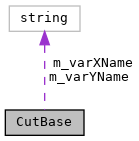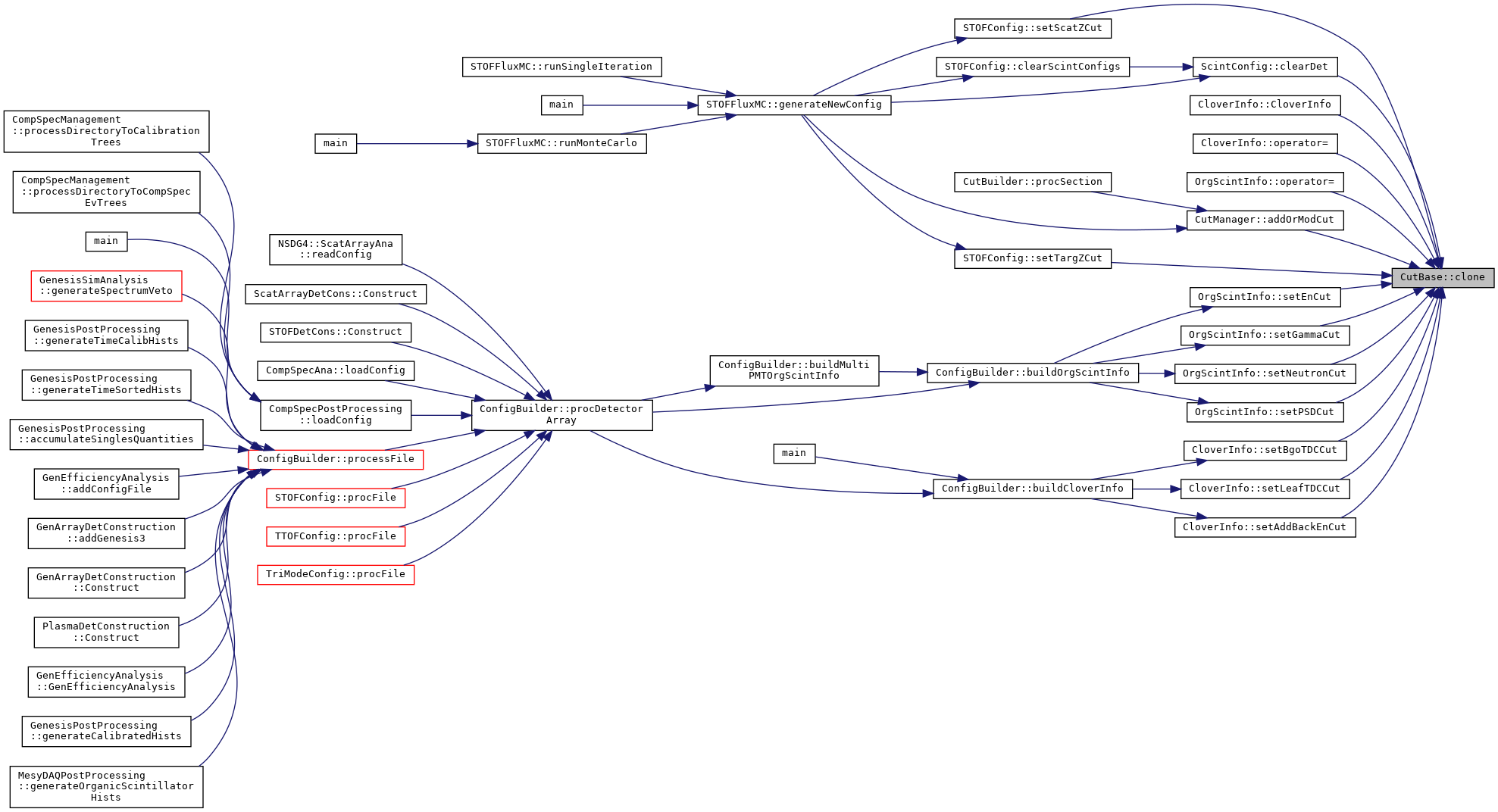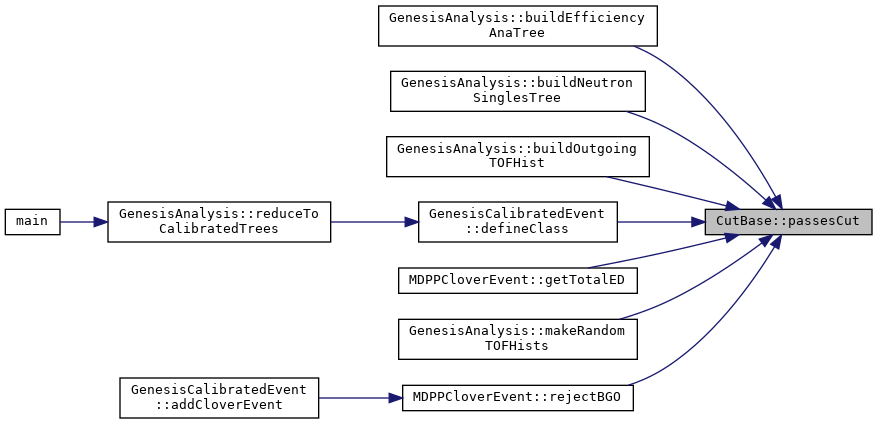#include <CutClasses.h>


Public Member Functions | |
| CutBase () | |
| virtual bool | passesCut (double a_X, const std::vector< double > &a_Ys={}) const =0 |
| virtual CutBase * | clone ()=0 |
| std::string | getVarXName () const |
| std::string | getVarYName () const |
| void | setVarXName (std::string a_varXName) |
| void | setVarYName (std::string a_varYName) |
| void | setRange (double a_min, double a_max) |
| TCutG * | getTCut (int a_N=10, double a_minX=0, double a_maxX=0, std::string a_name="CUTG") |
| virtual std::vector< std::pair< double, double > > | getNPoints (int a_N, double a_minX=0, double a_maxX=0) |
| virtual | ~CutBase () |
Protected Attributes | |
| std::string | m_varXName |
| std::string | m_varYName |
| double | m_rMin |
| double | m_rMax |
| bool | m_hasRange |
Detailed Description
this is an abstract base class for developing a variety of types of cuts on experimental data using a common interfact
Constructor & Destructor Documentation
◆ CutBase()
| CutBase::CutBase | ( | ) |
◆ ~CutBase()
|
virtual |
Member Function Documentation
◆ clone()
|
pure virtual |
Implemented in GraphCut, IntegerListCut, PolyRangeCut, PolyBoundCut, RangeCut, UpperBoundCut, and LowerBoundCut.

◆ getNPoints()
|
virtual |
Reimplemented in GraphCut, PolyRangeCut, PolyBoundCut, RangeCut, UpperBoundCut, and LowerBoundCut.

◆ getTCut()
| TCutG * CutBase::getTCut | ( | int | a_N = 10, |
| double | a_minX = 0, |
||
| double | a_maxX = 0, |
||
| std::string | a_name = "CUTG" |
||
| ) |
this function returns a TCutG* representitive of the cut stored in the config it may or not be implemented by inheriting fuctions. It relies on the below getNPoints function to provide an appropriately discratized representatoin of the implimented cut su
this function returns a TCutG* representitive of the cut stored in the config it may or not be implemented by inheriting fuctions. It relies on the below getNPoints function to simplicity in stripping root if the need arises

◆ getVarXName()
| std::string CutBase::getVarXName | ( | ) | const |
◆ getVarYName()
| std::string CutBase::getVarYName | ( | ) | const |
◆ passesCut()
|
pure virtual |
pure virtual function enforces implementation by inheriting base class a_X is used as value to test for single dimensional cuts a_Y allows extension in multi dimension by adding values to test
Implemented in GraphCut, IntegerListCut, PolyRangeCut, PolyBoundCut, RangeCut, UpperBoundCut, and LowerBoundCut.

◆ setRange()
| void CutBase::setRange | ( | double | a_min, |
| double | a_max | ||
| ) |

◆ setVarXName()
| void CutBase::setVarXName | ( | std::string | a_varXName | ) |

◆ setVarYName()
| void CutBase::setVarYName | ( | std::string | a_varYName | ) |

Member Data Documentation
◆ m_hasRange
|
protected |
◆ m_rMax
|
protected |
◆ m_rMin
|
protected |
◆ m_varXName
|
protected |
◆ m_varYName
|
protected |
The documentation for this class was generated from the following files:
- BasicSupport/include/CutClasses.h
- BasicSupport/src/CutClasses.cpp